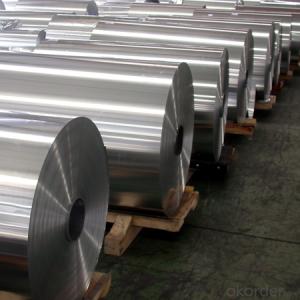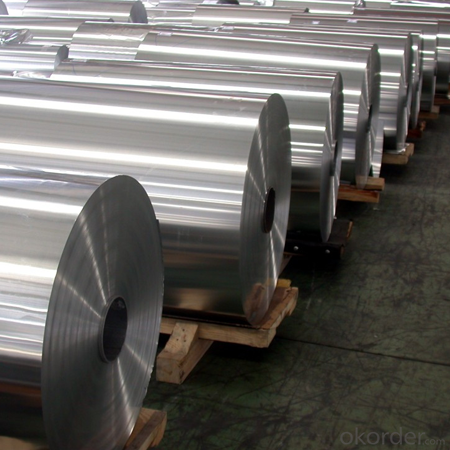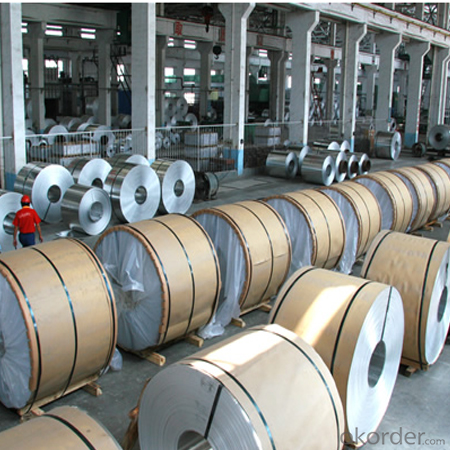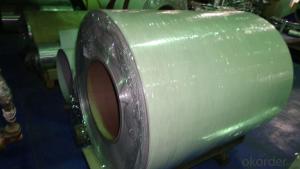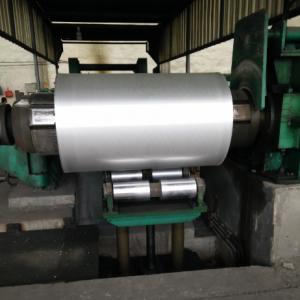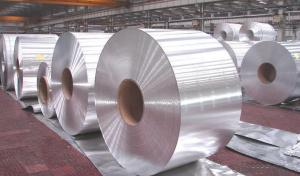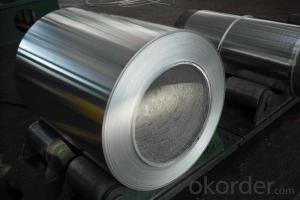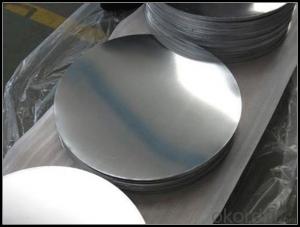1100 H22 Aluminum Rolled Sheet Aluminium Coil
- Loading Port:
- Shanghai
- Payment Terms:
- TT OR LC
- Min Order Qty:
- 5 m.t.
- Supply Capability:
- 500 m.t./month
OKorder Service Pledge
OKorder Financial Service
You Might Also Like
Specification
1100 H22 Aluminum Rolled Sheet Aluminium Coil
aluminum coil specifications:
1) Alloy :1050, 1060,1100, 3003 3004 3105 3A21 5005 5052 etc
2) Temper: O/H12/H14/H1/H18/H32/H34/H36/H38//H111/H112/H116/H321/T6/T651/T3/T351 etc
3) Thickness: 0.1mm to 6mm
4) Width:20mm to 3300mm
5)Coil weight: 100kgs to 6 tons depends on actual requirement
6)Core material: Aluminum or paper
7)Coil Inner diameter: 75mm, 150mm, 200mm, 300mm, 405mm, 505mm or as required
8) Protective film can be added
item | 3003 Aluminum coil | |
Standard | GB/T3190-2008,GB/T3880-2006,ASTM B209,JIS H4000-2006,etc | |
Material | 1060,1050,1100 3003,3103,3004,3005,3105 5052, 5454,5754 | |
Size | Thickness | 0.5mm-3.5mm |
Width | 800-1500mm | |
Weight/Roll | About 1.5MT/3MT | |
Quality control | Mill Test Certificate is supplied with shipment, Third Part Inspection is acceptable. | |
Surface | Bright, polished, hair line, brush, checkered, embossed, etc | |
Trade terms | Price term | ,FOB, CNF, CIF, etc |
Payment Term | TT,L/C | |
MOQ | 2MT | |
20 GP Capacity | About 20-25MT | |
Delivery time | 1.The products will delivery immediately after receiving the payment. 2.According to the order quantity, prompt delivery. | |
Export to | Ireland,Singapore,Indonesia,Ukraine,Spain,Canada,USA,Brazil,Thailand,Korea,Iran,India,Egypt,Kuwait, Oman,Viet Nam, South Africa, Dubai, Russia, etc | |
Package | Stick blue film→plastic film→waterproof paper→1~2 tons on a export standard pallet(corner protection) | |
Application | 1)Further making utensil.2)Solar reflective film3)The appearance of the building4)Interior decorating:ceilings,walls,etc.5)Furniture cabinets6)Elevator decoraction7)Signs,nameplate,bags making.8)Decoration inside and outside the car9)Household appliances:refrigerators,microwave ovens,audio equipment,etc.10)The consumer electronics:mobile phones,digital cameras,MP3,etc. | |
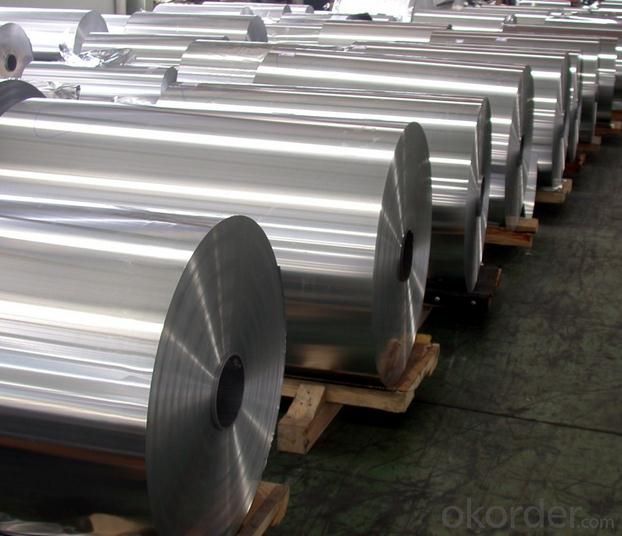

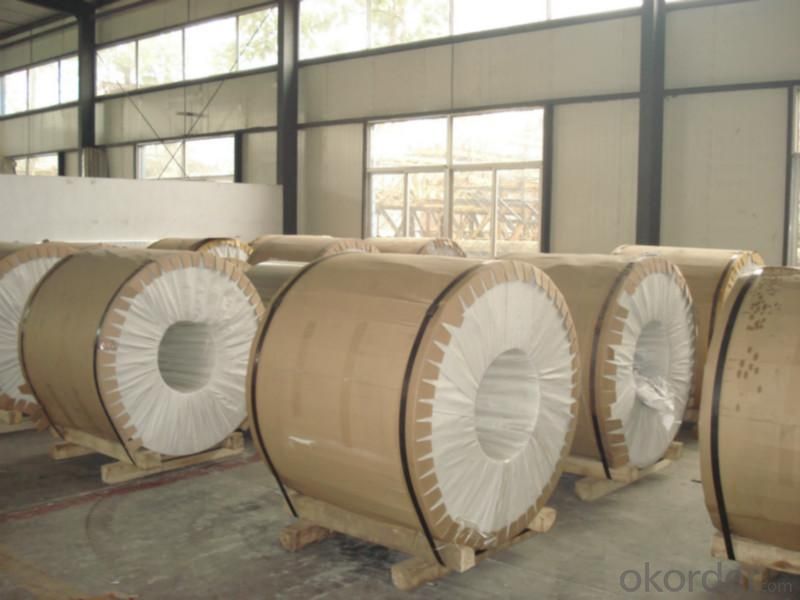
- Q: What is the typical heat transfer coefficient for aluminum coils?
- The heat transfer coefficient for aluminum coils can vary depending on several factors, including the application, coil geometry, and surrounding conditions. Generally, aluminum has high thermal conductivity, which enables efficient heat conduction. In forced convection applications, where heat is transferred using a fluid like air or water, the heat transfer coefficient for aluminum coils can range from 10 to 100 W/m^2K. This range is influenced by factors such as flow rate, velocity, and temperature difference between the coil and the fluid. In natural convection scenarios, where heat transfer occurs due to the buoyancy-driven flow of air, the heat transfer coefficient for aluminum coils is typically lower, ranging from 5 to 25 W/m^2K. This is because the movement of air is slower and the heat transfer effectiveness is reduced compared to forced convection. It's important to note that these values are general guidelines and can vary significantly depending on specific design considerations, material properties, and operating conditions. Therefore, it is recommended to consult specific heat transfer data or conduct detailed experiments or simulations to determine the precise heat transfer coefficient for a given aluminum coil application.
- Q: Can aluminum coils be used in solar panel manufacturing?
- Yes, aluminum coils can be used in solar panel manufacturing. Aluminum is lightweight, corrosion-resistant, and has good heat dissipation properties, making it a suitable material for solar panels. It is often used in the frame and backing of solar panels to provide structural support and durability.
- Q: What are the different types of surface finishes for decorative purposes?
- There are several different types of surface finishes that are commonly used for decorative purposes. These finishes can enhance the appearance of a surface, adding texture, depth, and visual interest. Some of the most popular types of surface finishes for decorative purposes include: 1. Polished: Polished finishes are smooth and shiny, creating a reflective surface. This finish is achieved by polishing the surface using abrasive materials, resulting in a glossy appearance. 2. Matte: Matte finishes have a flat, non-reflective surface. They are achieved by using sandpaper or other materials to create a smooth but dull appearance. Matte finishes are often used to create a more subtle and understated aesthetic. 3. Brushed: Brushed finishes have a distinctive linear pattern that is created by brushing the surface with a wire brush or abrasive material. This finish is commonly used on metals, such as stainless steel, to create a textured and visually interesting look. 4. Textured: Textured finishes involve adding patterns or designs to the surface through various techniques. This can include embossing, engraving, or applying a textured coating. Textured finishes can add depth and dimension to a surface, creating a unique and visually appealing effect. 5. Antiqued: Antiqued finishes are designed to mimic the appearance of aged or weathered surfaces. This can be achieved through techniques such as distressing, staining, or adding a patina. Antiqued finishes are often used to create a vintage or rustic look. 6. Metallic: Metallic finishes use metallic pigments or coatings to create a shiny and reflective appearance. This finish can add a touch of elegance and sophistication to a surface, making it a popular choice for decorative purposes. 7. High gloss: High gloss finishes have an extremely smooth and reflective surface, creating a mirror-like effect. This finish is achieved by applying multiple layers of clear coat or lacquer and polishing the surface to a high shine. High gloss finishes are often used to create a modern and luxurious look. Overall, the choice of surface finish for decorative purposes depends on the desired aesthetic and the type of material being used. Each finish has its own unique qualities and can greatly enhance the overall visual appeal of a surface.
- Q: How are aluminum coils used in the production of industrial machinery?
- Aluminum coils are commonly used in the production of industrial machinery for various purposes. These coils are primarily utilized in the fabrication of heat exchangers, such as condensers and evaporators, due to aluminum's excellent thermal conductivity. Additionally, aluminum coils are used to manufacture air conditioning systems, refrigeration units, and cooling towers, as they offer lightweight and corrosion-resistant properties. They are also employed in the construction of electrical transformers and motors due to their high electrical conductivity. Overall, aluminum coils play a crucial role in the manufacturing of industrial machinery, contributing to enhanced efficiency, durability, and performance.
- Q: Is it possible to utilize an angle grinder for cutting hot rolled aluminum coils?
- <p>Yes, you can use an angle grinder to cut hot rolled aluminum coils, but you must take precautions. Use a grinding disc specifically designed for metal cutting, preferably one with a diamond or carbide grit for better performance on aluminum. Ensure the grinder is equipped with a safety guard and wear appropriate safety gear, including goggles and gloves. Be aware that aluminum can be reactive when heated, so cutting may produce sparks and fumes; ensure proper ventilation. Always follow the manufacturer's guidelines for your specific angle grinder and safety regulations.</p>
- Q: Can aluminum coils be used in the manufacturing of beverage cans?
- Yes, aluminum coils can be used in the manufacturing of beverage cans. Aluminum is a commonly used material for manufacturing beverage cans due to its various advantages. Aluminum coils are typically rolled into thin sheets, which are then cut, formed, and coated to create the final can shape. These coils provide a lightweight, durable, and corrosion-resistant material that is suitable for storing and preserving beverages. Additionally, aluminum is a highly recyclable material, making it an environmentally friendly choice for beverage can production.
- Q: This question asks about the environmental effects that aluminum coils may have on the environment.
- <p>The environmental impacts of aluminum coils are multifaceted. Aluminum production, particularly the extraction and refining process, consumes significant energy and can result in greenhouse gas emissions. The mining of bauxite, the primary source of aluminum, can lead to deforestation and habitat destruction. However, aluminum coils are recyclable, which reduces their environmental footprint compared to non-recyclable materials. When recycled, aluminum saves up to 95% of the energy needed to produce new aluminum, reducing emissions and waste. Despite these benefits, improper disposal or incineration of aluminum can still contribute to pollution. Overall, the environmental impact of aluminum coils is complex, with both negative and positive aspects depending on production methods and waste management practices.</p>
- Q: How are aluminum coils processed for further fabrication?
- Various products can be created from aluminum coils by undergoing a series of steps for further fabrication. To begin, the coil is typically uncoiled to separate it into individual sheets or strips, which can be done manually or through automation. Next, the coils are cleaned to eliminate dirt, oil, or other contaminants. This step is crucial to ensure proper adhesion and surface finish in subsequent fabrication processes. The cleaning process may involve chemical treatments, rinsing, or mechanical brushing. Following the cleaning process, the coils often go through a pre-treatment stage, such as chemical conversion coating or anodizing. These treatments enhance the surface properties of the aluminum, providing improved corrosion resistance, better adhesion for coatings, and enhanced paint adhesion. Once the pre-treatment is finished, the coils are prepared for fabrication. This can be accomplished through various techniques, such as cutting, bending, stamping, or roll forming. Cutting can be performed using shearing, sawing, or laser cutting techniques, depending on the desired dimensions and accuracy. Bending and forming are commonly utilized to shape the aluminum coils into desired profiles or structures. This can be achieved through the use of press brakes, roll forming machines, or specialized bending equipment. Stamping is another popular method of fabrication, where the coils are pressed into specific shapes using dies and punches. This technique is commonly employed in the production of automotive parts, household appliances, and electronics. Upon completion of the desired fabrication, the coils may undergo additional surface treatments or coatings to provide protection or enhance their appearance. This can include painting, powder coating, or the application of protective films. In conclusion, aluminum coils undergo a series of steps including uncoiling, surface cleaning, pre-treatment, cutting, bending, stamping, and surface treatments to facilitate further fabrication. These processes enable the transformation of the coils into various products with the desired properties and characteristics.
- Q: Which would you guys recommend to a 13 year-old? I used a wooden bat at my last game, and I got a double to the left field wall, I don't think i've done that good with an aluminum bat all year. Should I continue using the wooden one? What do you guys think?
- Wood bats are better for the sport, but aluminum bats are better for the environment. To lighten bats they take too much off the handle, which makes wooden bats prone to breaking, which means a lot of trees getting cut down. Almost no one would willingly use a heavier bat, so unless leagues set handle thickness requirements that's unlikely to change. The argument against aluminum of course is that they give hitters an edge over pitchers. Pitchers don't like them because they let up more home runs, and because the ball comes back up the middle a lot faster. If leagues were really concerned about this they could create better rules governing what sorts of bats you can use. It's not hard to imagine that they could invent an aluminum bat that would perform more like a wooden bat. They've tried using different woods and that's let to all sorts of controversy. This bat hits to well; that bat splinters. As a kid I mostly played pick up games. You didn't tend to see a lot of hard throwing pitchers, so I actually preferred a heavier bat to keep me from jumping out to fast. Sometimes I'd even use a fungo bat, at least until my friends caught on.
- Q: Are there any limitations or drawbacks of using aluminum coils?
- There exist certain limitations and drawbacks regarding the utilization of aluminum coils. To begin with, one limitation is the higher cost of aluminum coils compared to alternative coil materials, such as copper. This disparity in cost can result in reduced cost-effectiveness, especially when large quantities of coils are necessary. Another drawback is that aluminum coils exhibit lower thermal conductivity in comparison to copper coils. Consequently, the transfer of heat may not be as efficient, ultimately impacting the overall system performance. In instances where heat transfer is of utmost importance, copper coils may be the preferred option. Furthermore, aluminum is more susceptible to corrosion in contrast to other metals. Although aluminum coils are typically coated or treated to enhance corrosion resistance, they can still be vulnerable to damage in harsh environments or if the coating is compromised. This can lead to diminished efficiency and a shorter lifespan for the coils. Moreover, aluminum coils may not be suitable for certain applications that require high strength or durability. Due to its relatively soft nature, aluminum may not effectively withstand heavy loads or extreme conditions as other materials would. Lastly, repairing or replacing aluminum coils can be more challenging compared to other coil types. The unique properties of aluminum necessitate the utilization of specialized tools and techniques, consequently adding to the overall complexity and cost of maintenance or repairs. In conclusion, while aluminum coils possess advantages, it is crucial to consider these limitations and drawbacks when selecting the appropriate coil material for a specific application.
Send your message to us
1100 H22 Aluminum Rolled Sheet Aluminium Coil
- Loading Port:
- Shanghai
- Payment Terms:
- TT OR LC
- Min Order Qty:
- 5 m.t.
- Supply Capability:
- 500 m.t./month
OKorder Service Pledge
OKorder Financial Service
Similar products
Hot products
Hot Searches
Related keywords
